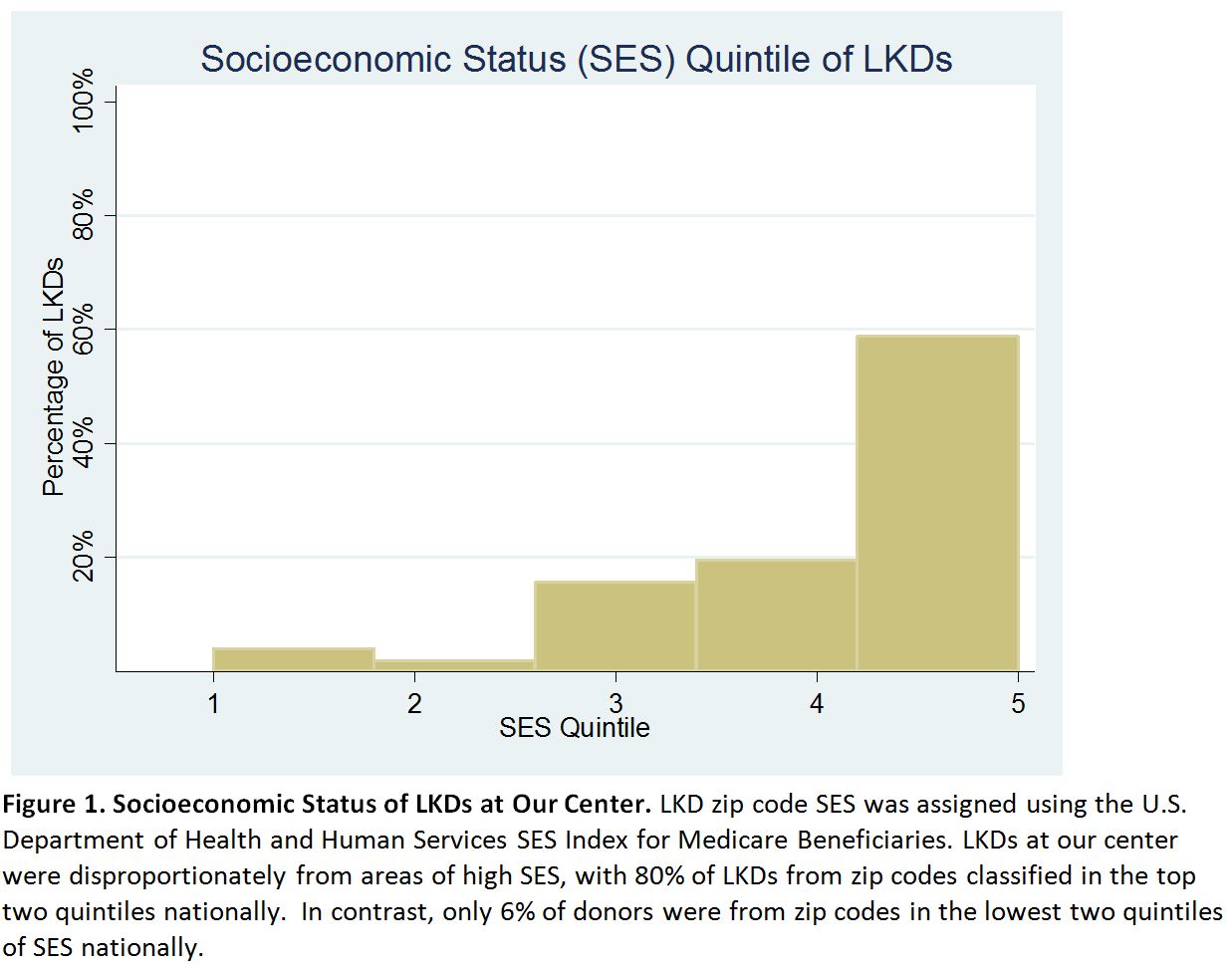Socioeconomic Status and Perceived Donation-Related Financial Burden Among Living Kidney Donors.
JHU, Baltimore
Meeting: 2017 American Transplant Congress
Abstract number: 375
Keywords: Donation
Session Information
Session Name: Concurrent Session: Logistic and Programatic Challenges in Kidney Living Donation
Session Type: Concurrent Session
Date: Monday, May 1, 2017
Session Time: 4:30pm-6:00pm
 Presentation Time: 4:54pm-5:06pm
Presentation Time: 4:54pm-5:06pm
Location: E450b
Perceptions of donation-related financial burden by living kidney donor candidates may contribute to declines in living kidney donation. The association between donation-related financial burden and living kidney donor (LKD) income and education has not been examined.
Methods: We collected demographic information and perceptions of donation-related financial burden from 51 LKDs at our center January 2015-March 2016. ZIP code was used to calculate distance traveled and to link to the U.S. Department of Health and Human Services SES Index for Medicare Beneficiaries, which is calculated using measures of employment, income, education, and crowding. LKD income collected from the donors was compared to median income for the ZIP code. Demographics of donors with incomes of <$100,000 and >$100,000 were compared using Fisher's exact testing.
Results: Ninety-four percent of LKDs were from ZIP codes in the upper three quintiles of SES (Figure), and 65% had an annual household income above the median for their ZIP code. Donation-related financial burden was reported by 26% of LKDs with income <$100,000 but no LKDs with income >$100,000 (p=0.01) (Table). However, there was no difference in the proportion reporting that the potential donation-related financial burden was important when they were deciding to donate (15% vs. 8%, p=0.7). LKDs with income >$100,000 were more likely to donate to close family (75% v. 40%, p=0.02) and less likely to travel >100 miles (25% vs. 56%, p=0.03) than LKDs with income <$100,000.
Conclusion: Donors were almost exclusively from higher-SES ZIP codes and frequently had above-median-for-ZIP-code incomes. Donation-related financial burden was exclusively observed in LKDs with income <$100,000. To increase living donation, the transplant community must ensure that socioeconomic status is not a barrier to becoming a living kidney donor.

CITATION INFORMATION: Ruck J, Massie A, Henderson M, Segev D. Socioeconomic Status and Perceived Donation-Related Financial Burden Among Living Kidney Donors. Am J Transplant. 2017;17 (suppl 3).
To cite this abstract in AMA style:
Ruck J, Massie A, Henderson M, Segev D. Socioeconomic Status and Perceived Donation-Related Financial Burden Among Living Kidney Donors. [abstract]. Am J Transplant. 2017; 17 (suppl 3). https://atcmeetingabstracts.com/abstract/socioeconomic-status-and-perceived-donation-related-financial-burden-among-living-kidney-donors/. Accessed December 13, 2025.« Back to 2017 American Transplant Congress
